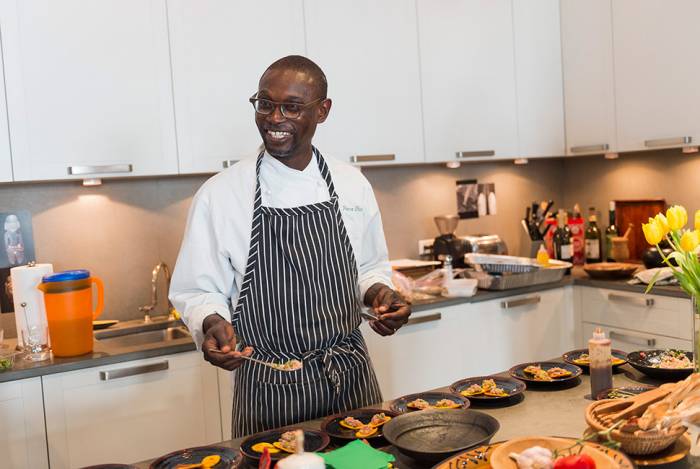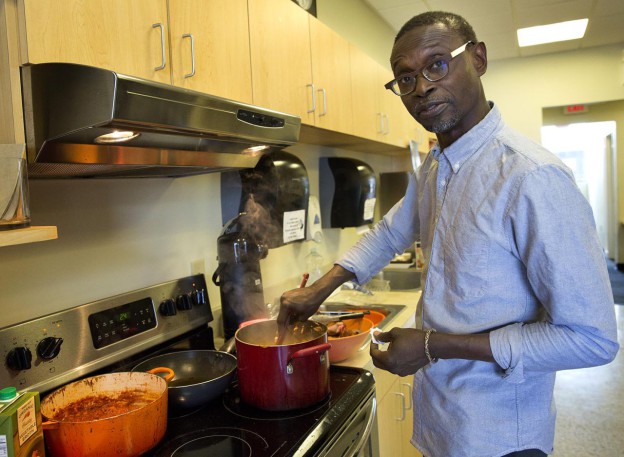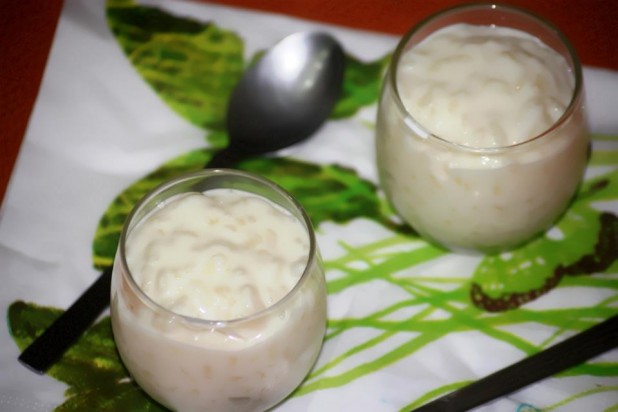
source
It may surprise you to learn that American cuisine has roots in West African food. Pierre Thiam, a Senegalese chef and author, traced many American dishes back to his country of origin.
Using food to build connections
Thiam moved to New York City in the 1980s. He still lives there with his wife and three children. He has owned two restaurants that mostly attracted Africans living in the city as well as curious New Yorkers wanting to learn more about African food. Prior to starting his businesses, Thiam worked in several culinary establishments specialized in Western cuisine.
“I worked at an Italian restaurant, at various French bistros but never for an African one. I was in New York where food cultures from all over the world are represented when I asked myself, why not do a research on food in my country of origin?” he recalled.
He began to research African food and learned a lot when he visited his parents in Senegal.
“I took their recipes and adapted them to make a modern cuisine.” His research also uncovered something interesting – “It’s around that time I realized that there were many dishes in America that were similar to African dishes.”

Dishes with African origins
Thiam began to notice how much African food had influenced America, especially when he traveled to the southern half of the country.
“Jambalaya (mixed rice, meat and vegetables), feijoada (black beans and meat), gombo (okra), and hoppin’ johns (peas) are all dishes that have been re-adapted from Senegal, Nigeria, Guinea and Benin. You will find variations of these dishes in America and the Caribbean region,” he said. “If you go to New Orleans, you will find many other dishes that originated from Africa such as roasted cassava, gombo, acarajé to name but a few.”

Slavery’s influence
How did African and American cuisine mix? African slaves sold in America influenced American food.
“It’s not surprising that Africans brought their cuisine with them. It kept them going for centuries,” Thiam said.
He has helped raise awareness of their impact. For last year’s International Day of Remembrance for the Victims of Slavery and the Transatlantic Slave Trade, Thiam created a special meal.
“I presented a menu that showed just how much the eating habits of African slaves influenced the food culture in the US and the Americas in general. The ingredients and recipes came from Africa during the transatlantic slave trade.”
He served five dishes. One of them was a rice pudding, called sombi in Senegal.
“The rice pudding is symbolic. I chose it because many do not acknowledge Africa’s contribution to the American cuisine. Can you imagine America without rice?”
African rice came to America on the slave ships.
“That is why the middle passage, or journey of slaves from the African coast to Europe, is important because it helped transform the culinary landscape of the Americas. It’s a part of history that is not talked about often.”
Thiam’s sees his work as a way of honoring the victims of slavery.
“They are the ones who brought this heritage here and who have allowed us to survive.”






